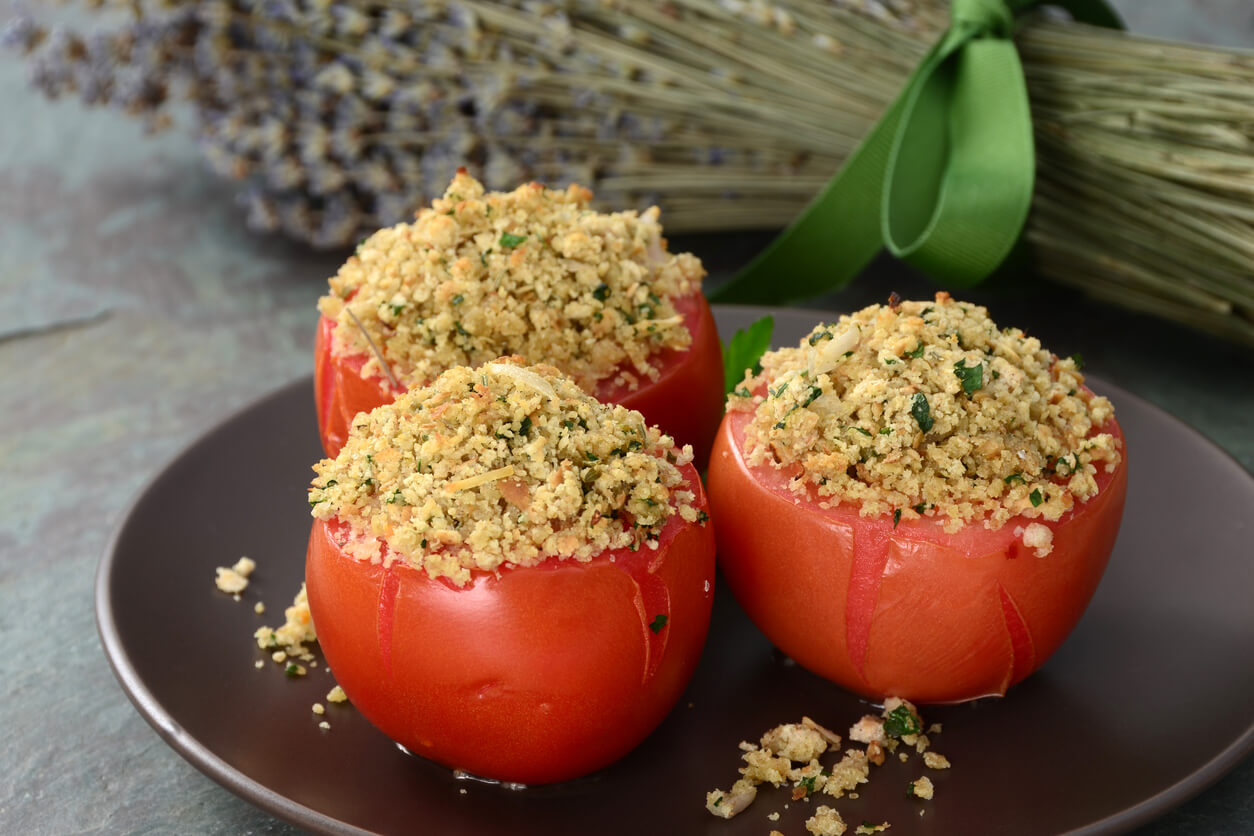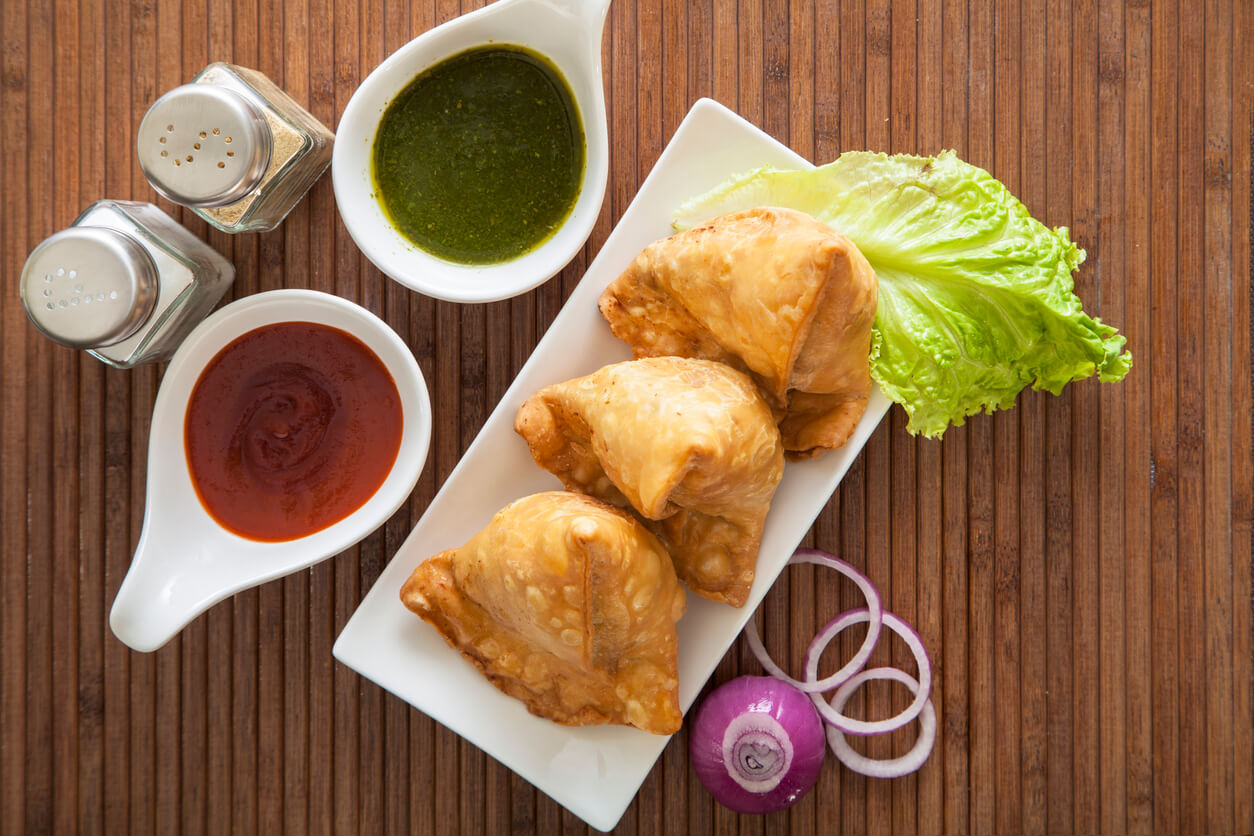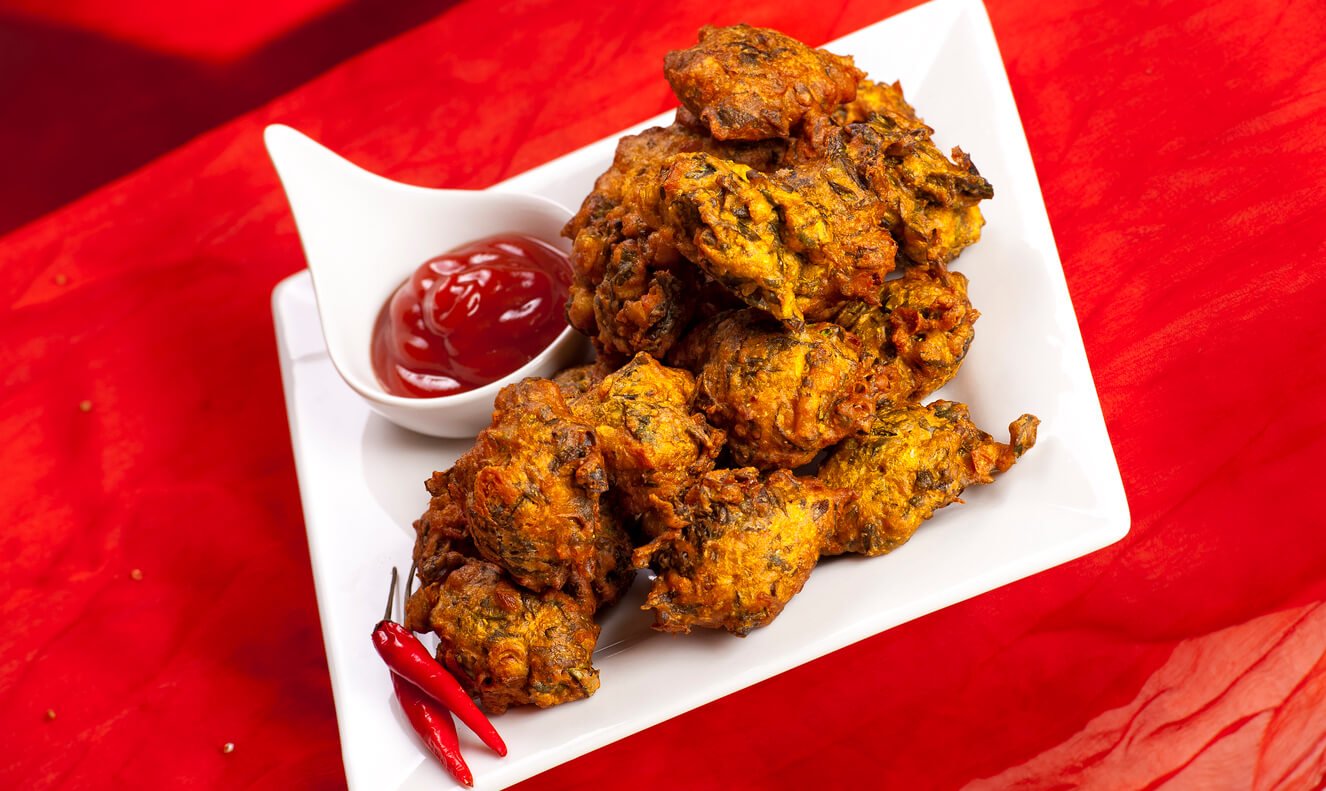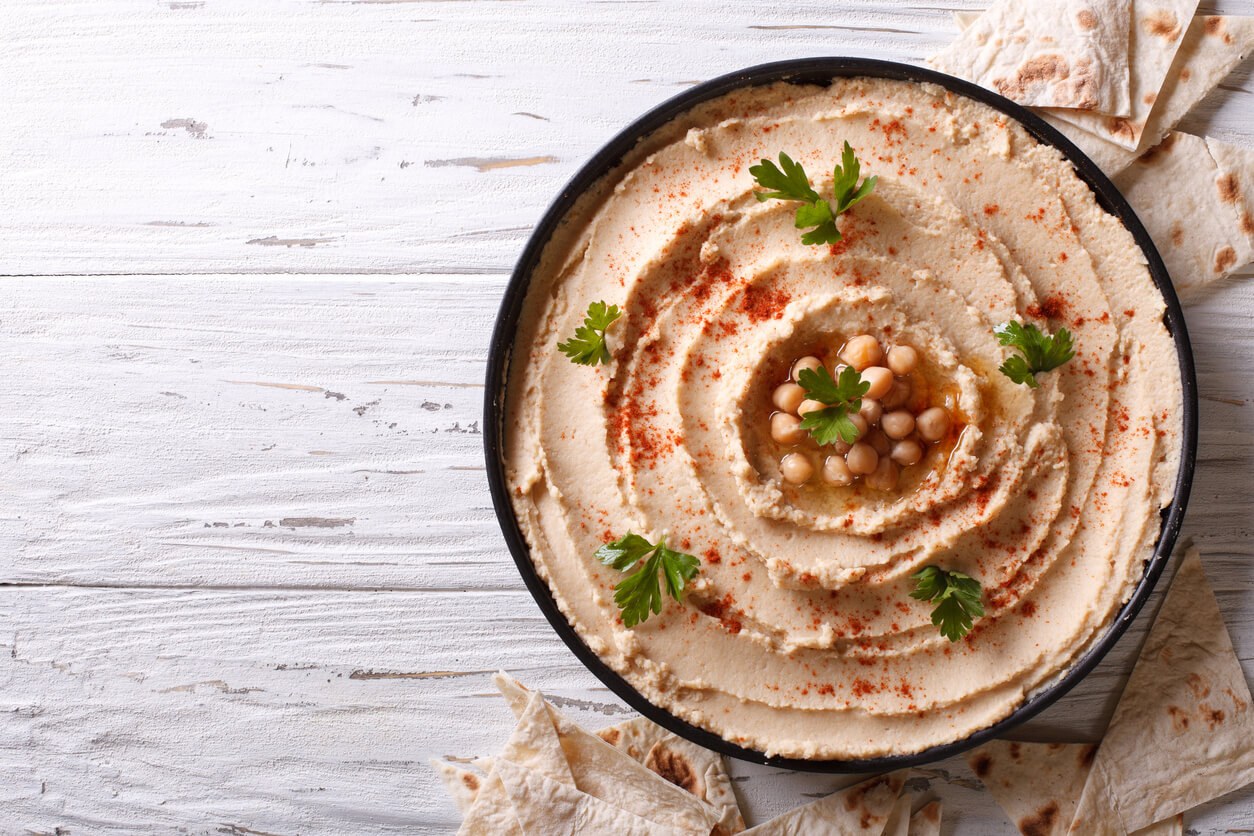 © iStock.com/sbossert
© iStock.com/sbossert
 © iStock.com/sbossert
© iStock.com/sbossertGeorgian Tomatoes Stuffed With Walnuts and Pomegranates
(adapted from Silk Road Cooking: A Vegetarian Journey—click here to purchase)
6 large, firm tomatoes
1/2 cup olive oil
1 tsp. coriander seeds
1 tsp. cumin seeds
1 large onion, peeled and thinly sliced
6 cloves garlic, peeled and crushed
1-1/2 cups walnuts, finely ground
2 tsp. salt
1/2 tsp. freshly ground black pepper
1/4 tsp. chili paste or _ tsp. cayenne
1/4 tsp. ground cinnamon
1/2 tsp. ground marigold (the type with edible flowers)
1 cup chopped fresh parsley or cilantro
1/4 cup pomegranate paste
1 Tbsp. sugar
1 tsp. coarse salt
Remove the stems from the tomatoes. Cut a slice off the tops and set aside. Scoop out some of the tomato pulp using a spoon or melon-baller and reserve for later use.
In a wok or large skillet, heat 2 tablespoons oil over medium heat. Add the coriander and cumin seeds and cook for 10 seconds. Add the onion and stir-fry for 10 minutes. Add the garlic and stir-fry for 1 minute longer. Reduce heat to low. Add the reserved tomato pulp, walnuts, salt, pepper, chili paste, cinnamon, marigold, parsley, pomegranate, and sugar and cook for another 5 minutes. Adjust seasonings to taste.
Stuff the tomatoes with the filling and replace their tops. Place the stuffed tomatoes side by side in an ovenproof, oiled dish. Drizzle with the remaining olive oil and sprinkle a little coarse salt over each tomato. Place the dish under the broiler for 5 to 10 minutes until the tomatoes are tender and their tops are slightly burnt yet still hold their shape.
Serve hot or cold, with bread, soy yogurt, rice, pasta, or couscous.
Preparation time: 20 minutes
Cooking time: 26 minutes
Makes 6 servings
Shirazi Cucumber and Pomegranate Salad
(adapted from Silk Road Cooking: A Vegetarian Journey—click here to purchase)
1 medium red onion, peeled and thinly sliced
1 Tbsp. salt
2 long seedless cucumbers, or 6 pickling cucumbers, peeled and thinly sliced
2 medium pomegranates, seeded (2 cups)
For the Dressing:
1 clove garlic, peeled and crushed
1 Tbsp. lime juice
1 Tbsp. pomegranate paste (available in Persian and specialty markets)
1/4 tsp. red hot pepper flakes or 1/4 tsp. chili paste
1 tsp. sugar
1 tsp. toasted sesame oil
1 tsp. salt
1/2 tsp. freshly ground black pepper
1/2 cup olive oil
4 cups shredded greens, arugula, or lettuce
Bed of greens
1/2 cup walnuts, toasted and coarsely chopped
Place the onion slices in a sieve, sprinkle with 1 tablespoon salt, and leave for 10 minutes (to remove any tang from the onion). Rinse with cold water, blot dry, and set aside.
Combine the onion, cucumber, and pomegranate seeds in a serving bowl and set aside.
To make the salad dressing, thoroughly mix all the salad dressing ingredients.
Pour the dressing over the salad, toss well, and adjust seasoning to taste. Serve on a bed of greens and garnish with walnuts.
This salad goes particularly well with rice or pasta.
Preparation time: 25 minutes
Makes 4 servings
 © iStock.com/dbrigade
© iStock.com/dbrigadeIndian Snack Samosa served with Green and Red Chutney.
Cabbage Samosa
2 dozen samosa wraps (or vegetarian spring roll wrappers)
1/2 kg finely shredded cabbage
1 chopped onion
1 tsp garlic paste
1 tsp whole cumin
1 tsp fenugreek seeds
1 tsp red chili powder
1/2 tsp mustard seeds (rai)
salt to taste
1 bunch chopped
cilantro
2 tbsp oil for frying
Heat the oil in a pan, toss in the mustard seeds and fenugreek seeds. Add onion and fry when they pop. Add cumin seeds and garlic paste and fry some more. Now add the cabbage, salt and red chili powder. Stir well and add some water, cook on low flame for 10 minutes. Add chopped cilantro when the cabbage is sufficiently cooked and let it cool on a rack. Take samosa wraps (parat) and fill with cabbage filling. Deep fry and serve with ketchup or chutney.
Baisan ki roti
Gram flour 1 1/2 cup
White flour 3/4 cup
1 tsp salt
1 tsp red chili powder
1/2 bunch cilantro
7 chopped green chilies
A few chopped mint leaves
1/2 tsp dried and ground pomegranate seeds
1 thinly sliced onion
1 tsp roasted cumin seeds
1 cup oil
Take a large bowl and put basin and white flour in it. Add all the ingredients and mix well. Add some water and oil and knead with hand. (Some people use milk to make the dough softer but if it is properly kneaded, one doesn’t need to use milk.) Make sure that the dough is neither too hard nor watery.
Make small balls and shape into roti. Fry both the sides with a couple of teaspoons of oil. If you are dieting then you must not use oil and slowly cook on low flame. Serve hot with green chutney.
Aaloo paratha
5 large potatoes
1 tsp salt
1 tsp red chilies
1 tsp cumin
7-8 sliced green chilies
1 bunch of cilantro chopped
1 thinly cubed onion
Wheat dough
Wash, boil and peel potatoes and mash them well. Add the rest of the ingredients and mix well. Make small rotis and spread potato mixture on the roti and cover with another roti. Fry on a skillet with a little oil. Serve hot with either soy raita or spicy chutney.
Sabzi paratha
1 small cabbage
1/2 cup shredded carrots
4 cups of wheat flour
1 tbsp grated ginger
2 tbsp grated tomato
2 green chilis
1/4 bunch of cilantro
2 tbsp vegetable oil
Oil to fry
Salt to taste
Grate the cabbage and finely chop the green chillies and cilantro and put it all in a bowl along with the shredded carrot. Take the wheat flour in another bowl, add the vegetable oil and mix. Add the vegetables, ginger, tomato and salt. Knead and make dough by adding water per requirement. Shape into balls and then roll them into round parathas with a rolling pin. Roast them on both sides with some oil. Serve hot with pickles.
Onion parathas
2 cups wheat flour
2 medium size onions chopped finely
1/2 bunch cilantro
7-8 green chilies
1 tsp chat masala (can be purchased in Indian or Pakistani groceries)
1/4 tsp cumin seed powder
2 tbsp lemon juice
Salt to taste
Knead the dough in the same way you would when making a chappati. Mix all the ingredients in bowl and keep aside for a few minutes. Make a small ball of the dough and shape it like a cup. Add a little of the onion mixture and close the dough cup tightly with your hand. Roll the paratha slowly, and then roast it on hot tawa. Serve hot with curry or soy yogurt.
 © iStock.com/ajiravan
© iStock.com/ajiravan
 © iStock.com/ajiravan
© iStock.com/ajiravanVegetable Pakora
Submitted by Muhammad Adil Akhtar
approximately a quarter to a third of a 1kg(2.2lb) packet of gram flour (chick pea flour)
1 large potato
1 small onion
between half a teaspoon or full teaspoon (depending on how hot you like it) of chili powder
half a teaspoon of haldi (tumeric)
1/4 teaspoon of bicarbonate of soda*
salt**
some water
cooking oil suitable for deep-frying
Peel the potatoes cut into small cubes and boil for in water for about 10mins;
Chop the onion into small chunks and separate all the layers;
Mix the gram flour, the onion parts, the boiled potatoe parts , tumeric , haldi and also the bicarbonate of soda and salt* with a small amount of water till the mixture is ‘stodgy’ and able to be scooped into spoonfulls.
Heat up the oil till its super hot in the dee pfrying pot; and then make drop tablespoon fulls of the pakora mixture into the oil (in a deep frying pot), put the heat down a little (so they don’t just burn and to ensure they cook inside) and cook until they are floating at the top of the oil and they are browned.
Drain them and eat immediately after cooling.
* Optional: the bicarbonate makes the pakora slightly chewier. If it isn’t in the mixture they will be fairly crunchy
** You may wish not to use salt for health reasons
***Once you get used to making this recipe you may wish to modify the ingredients a bit. For example, instead of cutting the potato into cubes I used 2 potatoes and mash them to make the pakora have a slight potato croquet texture to it. Also I sometimes put garam masala or madras powder into it to make it taste more the way I like it.
Jary
1 1/2 tsp. olive oil
1 medium onion, chopped
3-4 cloves garlic, pressed or minced
3/4 tsp. paprika
Pinch cayenne
1/2 cup tomato purée
4 cups vegetable stock or water
1/2 tsp. salt
1/4 cup fine cracked wheat (or bulghar)
1/2 cup each of parsley, mint leaves and cilantro (coriander), coarsely chopped fresh or dried
2/3 cup cooked chickpeas (garbanzo beans)
3-4 tsp. lemon juice
Salt, to taste
Heat oil in heavy soup pot over medium heat. Sauté onion until tender. Add garlic, paprika and cayenne, cook for 1 to 2 minutes, stirring constantly. Add tomato purée and stock or water. Bring to simmer and add salt and cracked wheat. Cover, reduce heat and simmer gently, stir occasionally until cracked wheat is cooked, about 30 minutes (15 minutes if using bulghar). Remove from heat and cool slightly. Transfer soup to blender or food processor (optional). Add parsley, mint and cilantro; blend until almost smooth. Return soup to pot, stir in chickpeas and reheat. Add lemon juice and salt to taste.
 © iStock.com/ALLEKO
© iStock.com/ALLEKOClassic hummus with parsley on the plate and pita bread. horizontal top view
Chickpea Dip
8 oz. (225g) dried chickpeas
5 Tbsp. tahini
2 cloves garlic, crushed
3 Tbsp. lemon juice
1 tsp. salt
Garnish:
Olive oil
1 black olive
Paprika
Soak the chickpeas overnight and drain. Cover with cold water and simmer until the chickpeas are tender, removing the surface “scum” when necessary. Drain, reserving a cup of the liquid and a few chickpeas for garnishing. Remove the skins of the remaining chickpeas by rubbing or pressing with a rolling pin. Add the tahini, garlic and lemon juice and purée. Allow to cool. Serve in a large flat serving dish, smoothing the dip with the back of a spoon, leaving a very slight hollow in the center. To garnish, drizzle with a little olive oil. Add a few whole cooked chickpeas, a sprinkling of paprika and a black olive in the center.
Fried Bean Croquettes
8 oz. (225g) dried chickpeas
8 oz. (225g) fresh or dried broad beans
4 cloves garlic, crushed
4 onions, finely chopped
4 Tbsp. parsley, chopped
2 Tbsp. fresh cilantro (coriander), chopped
1-2 tsp. cilantro (coriander), ground
1 tsp. cumin, ground
Salt and pepper
2-3 Tbsp. flour or 1/2 tsp. baking powder (if required)
Oil for deep-frying
Soak the dried chickpeas and broad beans overnight, then drain and wash. Grind the chickpeas and beans into a paste and add all the remaining ingredients except the oil. Mix thoroughly and let stand for 30 minutes. If the paste does not hold together add the flour or baking powder. Form into small flat balls and deep fry until brown and the crust is crisp. Drain on absorbent paper.
Fava Bean Salad
1 can (19 oz. or 540 ml) green fava beans, drained
1/4 cup scallions (green onions), finely chopped
1/2 cup parsley, finely chopped
2 cloves garlic, crushed
2 Tbsp. lemon juice
1/4 cup olive oil
Salt and pepper, to taste
In a serving dish, mix all the ingredients well. Serve with pita bread, if desired.
Vegan Curd
Dried Soybeans
One of the following – vinegar (5%), lemon juice, epsom salts, nigari
Food processor, blender, hand grain mill, or meat grinder
3 or 4 gallon heavy pot or double boiler
another large pot or bowl
large wire whisk
2 to 3 foot square piece of nylon mesh or several layers of cheesecloth
large wooden paddle or spoon
colander
ladle
Preparing the soybeans
Start by rinsing and then soaking 5 cups of whole soybeans in 15 cups of cold water overnight, or at least 8 to 10 hours. You can quick-soak your beans by pouring 15 cups of boiling water over the rinsed soybeans and letting them soak for 2 to 4 hours. Soybeans will double in size and be free of wrinkles when they are finished soaking. If you split one in half, it will have a flat surface inside, rather than a concave surface. Be sure to keep the soaking beans in a cool place or under refrigeration if the water is very hot so they won’t sour. Soured beans will make thinner milk and therefore less yield.
After the soybeans have been soaked, rinse them in a colander. Now they are ready for grinding. You can use a food processor, grinding 2 cups of soaked soybeans at a time into slightly gritty or sandy paste. The grinding can also be done in a meat grinder, using the finer grind. If it is ground too smoothly it will be hard to strain and the resulting milk will have a pulpy texture. If it is not ground smoothly enough, it will not give a good yield.
Cooking the soymilk
Using a large whisk, whip the soybean paste into about 2 gallons of rapidly boiling water (3 cups boiling water to every cup of soaked beans). Bring it back to a boil, turn down to medium heat, and let it cook at a low boil for 15 to 20 minutes, stirring occasionally. Watch the pot carefully, because soymilk can foam up and boil over quickly. Keep a cup of cold water next to the pot, to pour in if it starts to foam up quickly.
If you cook on an electric stove, you may have to remove the pot from the burner to adjust the heat if it starts to boil over.
Blender method
The grinding can also be done in a blender. For every cup of soaked soybeans, add 3 cups of water to the blender. The water can be either hot or cold. Blend this at high speed into a fine slurry (about 1 minute), then pour into a heavy pot or double boiler. Bring to a low boil and cook for 15 minutes.
Straining the soymilk
Set a colander over a large bowl or pot and line the colander with a large piece (about 2 to 3 feet square) of nylon mesh or several layers of cheesecloth. Pour or ladle the cooked soybean mixture into the cloth-lined colander. Gather up two corners of the cloth in each hand and raise the ball of pulp a few inches out of the colander. Roll it back and forth in the cloth by alternately raising and lowering each hand. This will release most of the soymilk. Set the cloth and contents back into the colander, gather up the ends of the cloth again and twist them together until the cloth tightens around the ball of pulp.
Press the bundle with a wooden paddle or a jar to extract as much milk as possible. You can open the cloth up after you have pressed out all the milk, and mix 2 to 3 cups of boiling water to the pulp. Twist the cloth back up and press again. The pulp can be reserved for baking.
Curding the soymilk
Dilute 1/2 cup of vinegar in 1 1/2 cups of hot water. For other curding agents see the table below. For the highest yield, the curding should be done slowly (in a few stages). This provides large, soft curds.
Stir the freshly strained soymilk in a slow circular motion while it is still hot (about 185&Mac176; F). Stop the paddle upright to create a turbulence and immediately add 1 1/4 cups of the vinegar solution over the top of the soymilk, cover to retain the heat and let it sit undisturbed for 5 minutes. The soymilk will start to form large white curds. If there is still soymilk present, poke gently to activate curding and gently stir in the remaining 1/4 cup vinegar solution. Cover the pot again and leave it 2 to 3 more minutes.
The curds are complete when they are surrounded by the clear yellow liquid called whey. If there is a lot of whey and only a few curds, the beans may not have been ground finely enough, resulting in thin milk and low yield.
The whey acts as a natural detergent and will suds easily if stirred. It is good for washing and soaking the pots and cloths used during the making process.
Curding agents
|
Soybeans
|
Warm Water
|
Curding Agent
|
| 1 lb. (2 1/2 cups) | 1 cup | 1/4 cup vinegar |
| 1 lb. (2 1/2 cups) | 1 cup | 1/4 cup lemon juice |
| 1 lb. (2 1/2 cups) | 1 1/2 cups | 1 1/2 to 2 tsp. nigari |
| 1 lb. (2 1/2 cups) | 1 1/2 cups | 1 1/2 to 2 tsp. epsom salts |
| 2 lbs. (5 cups) | 1 1/2 cups | 1/2 cup vinegar |
| 2 lbs. (5 cups) | 1 1/2 cups | 1/2 cup lemon juice |
| 2 lbs. (5 cups) | 2 cups | 3 to 4 tsp. nigari |
| 2 lbs. (5 cups) | 2 cups | 3 to 4 tsp. epsom salts |
Vegan Curd (quick method)
Firm tofu
Take firm tofu and drain completely. Press very well and crumble.
"There is not an animal that lives on the earth, nor a being that flies on its wings, but they form communities like you. Nothing have we omitted from the Book, and they all shall be gathered to their Lord in the end" - Al-Qur'an, 6:38
"Whoever is kind to the creatures of God, is kind to himself." - The Prophet Muhammad (pbuh), narrated by Abdallah bin Amru in Bukhari and Muslim collections
